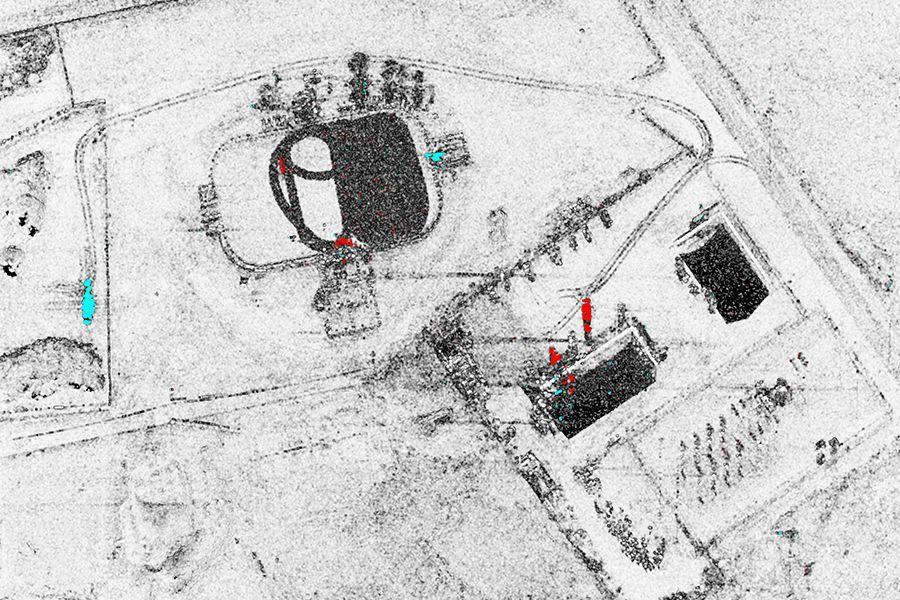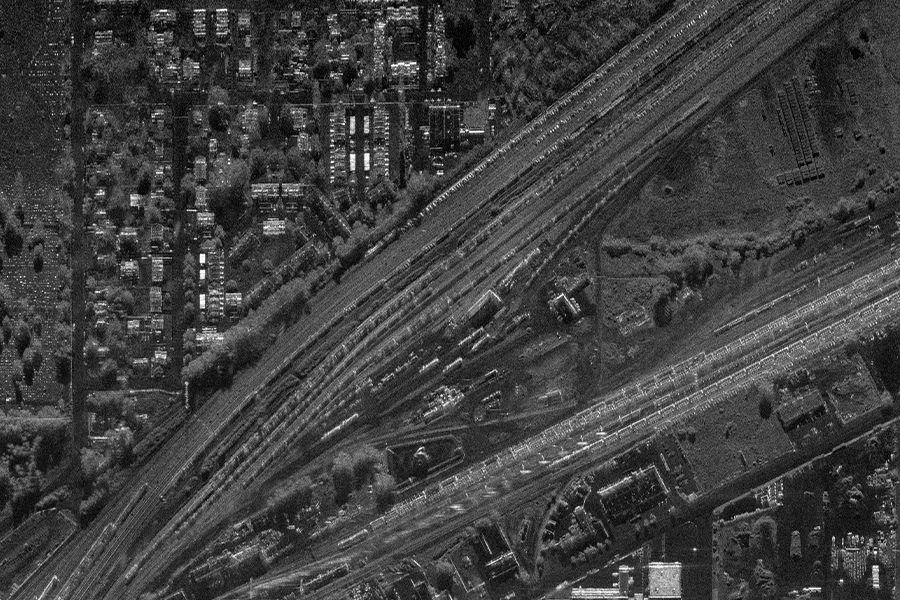DETECT CHANGES
CCD is comprised of Coherent Change Detection and Magnitude Change Detection. Both change detection processes use radio waves captured in SAR imagery to determine changes that have occurred between two subsequent images.
CCD requires multiple images of the same area. The first flight pass over an area generates a baseline, or reference, SAR image. On a subsequent pass the SAR system collects data over the same area and an additional SAR image is generated. The two passes are then compared and processed to form the CCD image.
Differences in coherence appear in black and white, black indicating those signals that returned with a change in timing, and white indicating no change. Magnitude differences between the two images show up as red and blue. Red indicates what has left, “Red Fled” and blue indicates what is new to the scene, “Blue New.”
Changes and activities that are not easily seen in a single pass become obvious through the CCD process.
CCD IMAGE SAMPLES
TYPICAL USES FOR CCD
Using CCD and combining it with other ISR solutions allows IMSAR systems to perform multiple applications in a variety of industries. Typical uses for IMSAR’s ISR solutions can include:
- Intelligence Gathering
- Military Surveillance
- Search & Rescue Operations
- Disaster Preparation & Response
- Landslide Monitoring
- Wildland Fire Monitoring
- Pipeline Monitoring
- Livestock & Wildlife Monitoring
- Monitoring Construction Sites
- Monitoring Mining Operations
- Border Security
- Counter Drug Trafficking Operations
For more information about CCD and other products, contact us at information@imsar.com or call IMSAR sales at 801.798.8440.


